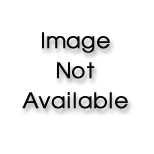
Concept explainers
(a)
Interpretation:
The structure of the repeating units of
Concept introduction:
In chemistry structure is the arrangement of
Carboxylic acid: One
Ester: One
Esterification reaction: Esters are prepared by the reaction of a carboxylic acid and an alcohol molecule with the elimination of water molecule. The addition of a strong acid such as
Here, the
Polyester: One
(b)
Interpretation:
The structure of the repeating units of polymer which is made from the given compounds has to be given.
Concept introduction:
In chemistry structure is the arrangement of chemical bonds between atoms in a molecule, specifically which atoms are chemically bonded to what other atoms with what kind of chemical bond.
Carboxylic acid: One
Amide: One
Amide Formation: Amide is formed when a carboxylic acid reacts with an amine or ammonia.
Here, the
Polyamide: One
Want to see the full answer?
Check out a sample textbook solution
Chapter 17 Solutions
FUND.OF GEN CHEM CHAP 1-13 W/ACCESS
- Write equations for the following reactions: Linear polymerization of formaldehydeCyclic polymerization of formaldehydeLinear polymerization of acetaldehydeCyclic polymerization of acetaldehydearrow_forwardDraw the structures of the following compounds. (Includes both new and old names.) 3-cyclopentylhexan-3-olarrow_forwardIdentify the functional groups in the following compoundsarrow_forward
- Identify the component monosaccharides of each of the following compounds and describe the type of glycosidic linkage in each.arrow_forwardIdentify the functional groups in the followingmolecules.arrow_forwardWhich of the following define the stereochemistry of alanine (as per the structure shown)? Note: Functional groups arranged horizontally are facing towards the front, and the functional groups arranged vertically are facing towards the back. a) d- b) S- c) R- d) I-arrow_forward
- Following is a structural formula for a disaccharide. a) Name the two monosaccharide units in the disaccharide. b) Describe the glycosidic bond.arrow_forwardUsing the picture provided, match the correct name of each of the functional groups highlighted in blue.arrow_forwardPlease indicate the coordination geometry for the Heme A in the picture. A) tetrahedral B) octahedral C) square planar D) trigonal planar E) lineararrow_forward
